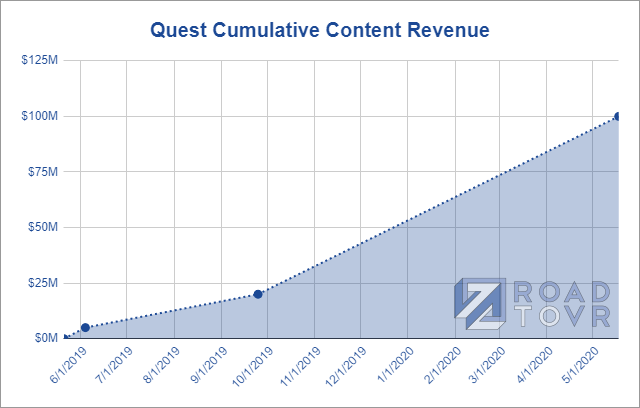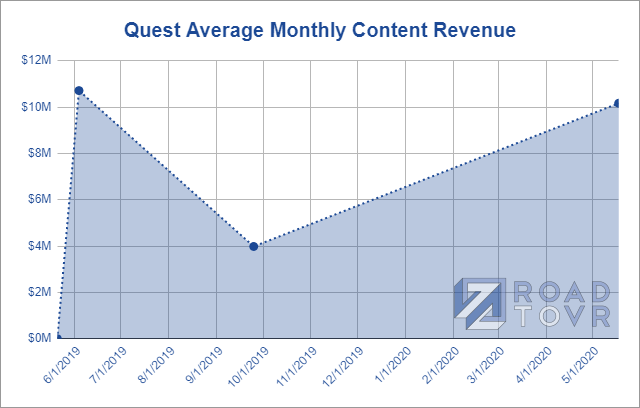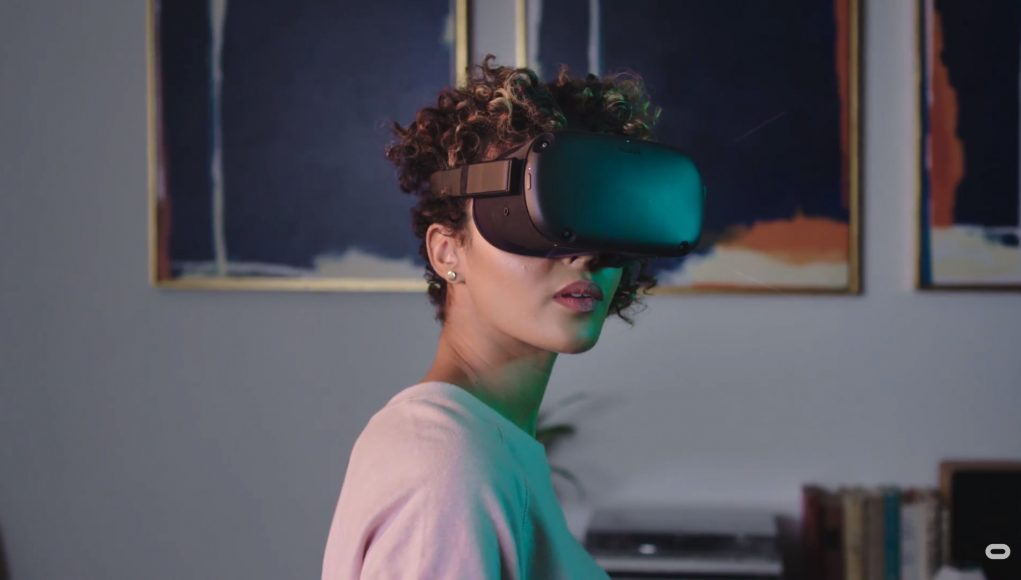This week marks the first year anniversary of Oculus Quest, Facebook’s latest and greatest standalone VR headset. Today the company revealed that $100 million worth of Quest games and apps have been sold to date.
Facebook hasn’t yet revealed the big question on everybody’s mind: how many Quest units have sold? But the company is offering up some numbers which give us an idea of the scope of the headset’s performance so far, and what kind of opportunity its ecosystem represents for developers.
Today Facebook announced that Quest users have spent $100 million on games and apps since the headset launched on May 21st, 2019, a tidy number for Quest’s first year on the market.
Combined with other content revenue milestones that Facebook has shared over the last year, we can get a rough sense of how things are going for the headset and its app store.
 By charting the monthly average content revenue between known data points, we can also roughly understand the momentum of app sales.
By charting the monthly average content revenue between known data points, we can also roughly understand the momentum of app sales.
 Of course, this data is quite sparse; notably we’re missing data around the holiday season which likely saw a major bump in revenue from content purchases on Oculus Quest, so that would surely bend the line between the last and second to last data points but we can’t say by how much.
Of course, this data is quite sparse; notably we’re missing data around the holiday season which likely saw a major bump in revenue from content purchases on Oculus Quest, so that would surely bend the line between the last and second to last data points but we can’t say by how much.
What we do know about that time period is that Christmas day 2019 saw nearly $5 million in VR content spent across all Oculus headsets, though we don’t know the specific breakdown between Quest, Rift, and Go.
At our last check, the average price of the most popular paid apps on Quest was $19. That let’s us figure that $100 million in content sales equates to around 5.2 million apps sold in Quest’s first year.
The $100 million content revenue milestone also gives us a hint about how many Quest headsets have been sold. By roughly guessing the average content spend per customer, we can work out a rough estimate of Quest unit sales.
One year after the launch of Quest, we’d guess that the average content spend is around $100 (four $25 games). Taking that as our assumption, we can estimate Quest has sold somewhere in the neighborhood of 1 million units to date.
If that’s true, Quest is selling reasonably well, but not as well as PlayStation VR which hit 1 million units just four and a half months after launch and has reached 5 million units to date.
To what extent Quest’s unit sales have been constrained by stock shortages related to the Coronavirus pandemic isn’t certain, but the good news for Facebook is that stock of all Oculus headsets looks to finally be picking back up in the last few weeks.







